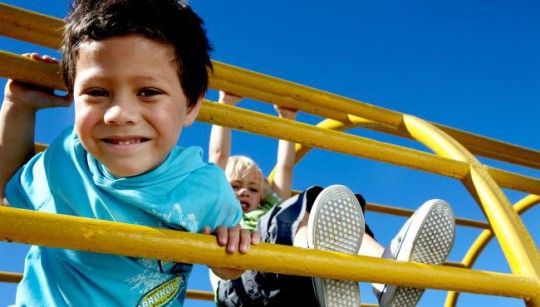According to information compiled by Volunteer Firemen’s Insurance Services, Inc. (VFIS), each year more than 200,000 children go to U.S. hospital emergency rooms with injuries associated with playground equipment. Between 2001 and 2008, 40 deaths were associated with playground equipment and the average age was six years old, with the median age being four years old.
Learn the who, what, when, where, and how of playground injuries and learn how to keep your children and students safe.
Who
Between 2001 and 2008, 218,851 children between the ages of zero and 12 were treated in emergency rooms across the United States for injuries they received on playground equipment.
What
Here is a breakdown of the most common types of injuries:
- 36% fractures
- 20% contusions/abrasions
- 17% lacerations
- 12% strains/sprains
- 5% internal organs
- 3% other
- 2% concussions
When
The following are the top equipment pieces associated with playground injuries:
- 23% climbers
- 22% swings
- 17% slides
- 9% overhead ladders
Where
Here is a listing of locations where the injuries are occurring:
- 51% public playground equipment
- 19% home playground equipment
- 20% not recorded
- 1% other
How
This breakdown lists how injuries are occurring:
- 67% falls or equipment failure
- 8% hazards around but not related to equipment
- 7% collisions with other children or equipment
- 7% entrapments
Prevention Checklist:
- Make sure surfaces around playground equipment have at least 12 inches of wood chips, mulch, sand or pea gravel. Surfaces could also be mats made of safety-tested rubber or rubber-like materials.
- Check that protective surfacing extends at least six feet in all directions from play equipment. For swings, be sure surfacing extends, in back and front, twice the height of the suspending bar.
- Make sure play structures more than 30 inches high are spaced at least nine feet apart.
- Check for dangerous hardware, like open “S” hooks or protruding bolt ends.
- Make sure spaces that could trap children, such as openings in guardrails or between ladder rungs, measure less than three-and-a-half inches or more than nine inches.
- Check for sharp points or edges in equipment.
- Look out for tripping hazards like exposed concrete footings, tree stumps, and rocks.
- Make sure elevated surfaces, like platforms and ramps, have guardrails to prevent falls.
- Check playgrounds regularly to see that equipment and surfacing are in good condition.
Remember to carefully supervise children on playgrounds to make sure they remain injury free. For more information on ways to keep kids and families safe, visit www.escapeinc.org.


